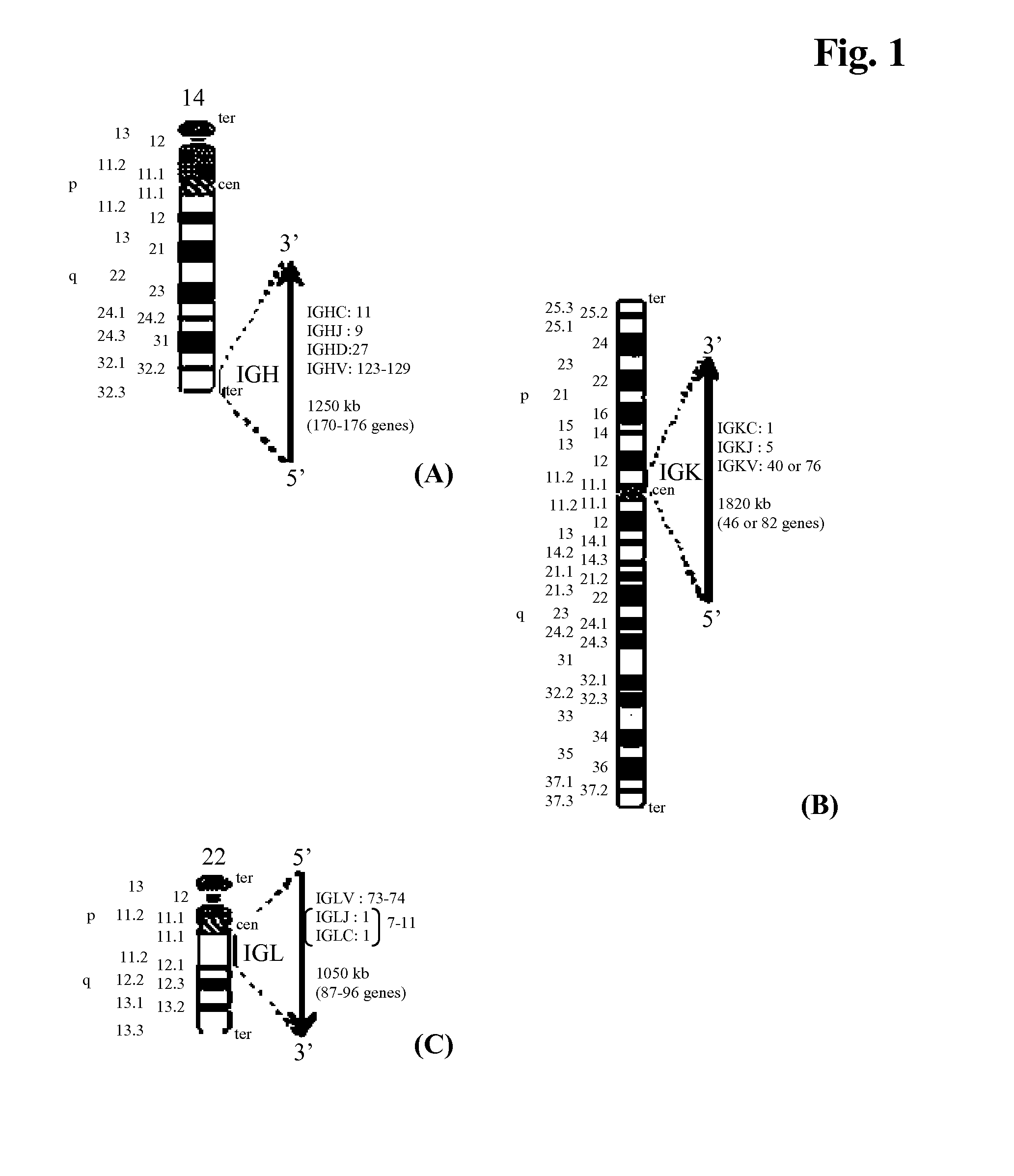METHOD FOR OBTAINING FAB FRAGMENTS FROM SINGLE ANTIBODY PRODUCING CELLS BY MULTIPLEXED CPR IN COMBINATION WITH TaqMan PROBES
a single antibody and fab fragment technology, applied in the field of obtaining fab fragments from single antibody producing cells by multiplexed cpr in combination with taqman probes, can solve the problems of random pairing of immunoglobulin heavy and light chains, phage or yeast display-based combinatorial library approaches, and the loss of antibody diversity,
- Summary
- Abstract
- Description
- Claims
- Application Information
AI Technical Summary
Benefits of technology
Problems solved by technology
Method used
Image
Examples
example 1
Amplification of IgG Genes from Humanized Immunized Mice's Single B Cell by a Real-Time One Tube Reverse-Transcriptase Polymerase Chain Reaction
example 2
Generation of Linear Template for In Vitro Translation
[0110]For the first polymerase chain reaction gene specific primer have been designed comprising the necessary overlapping sequences to the regulatory DNA regions of the T7 phage. For the second polymerase chain reaction the product of the first PCR was combined with nucleic acid fragments comprising the regulatory sequences and encoding the tag-sequence, respectively. A 3′-terminal extension was achieved by hybridization with the nucleic acid fragments comprising the regulatory elements. This linear expression construct is further amplified with the help of two terminal primer. These primer comprise the following sequence: 5′-CTTTAAGAAGGAGATATACC+ATG+15-20 bp of the gene-specific sequence (5′-primer, SEQ ID NO: 11) or 5′-ATCGTATGGGTAGCTGGTCCC+TTA+15-20 bp of the gene-specific sequence (3′-primer, SEQ ID NO: 12).
[0111]In Figure X lanes 1, 5 and 9 represent the blank water controls. The heavy chain nucleic acid are contained in la...
example 3
[0112]In vitro translation and huFab specific ELISA
[0113]In vitro translation is carried out as outlined above.
[0114]As can be seem from FIG. 10 nucleic acids obtained with a two-step polymerase chain reaction with two variable primer sets does not provide for a linear expression construct which allows the in vitro production of the encoded Fab immunoglobulin fragment. In contrast the two-step polymerase chain reaction with one fixed and one variable set of primer employed in separated successive polymerase chain reactions allows for the subsequent provision of a linear expression construct and the in vitro translation of IgG HC and IgG LC comprising immunoglobulin Fab fragment.
[0115]In contrast to this is the two-step polymerase chain reaction comprising one fixed set of primer more efficient in the multiplex format as the polymerase chain reaction employing two fixed sets of primer. By employing only one fixed set of primer up to 5-times higher optical densities can be achieved.
PUM
 Login to View More
Login to View More Abstract
Description
Claims
Application Information
 Login to View More
Login to View More - R&D
- Intellectual Property
- Life Sciences
- Materials
- Tech Scout
- Unparalleled Data Quality
- Higher Quality Content
- 60% Fewer Hallucinations
Browse by: Latest US Patents, China's latest patents, Technical Efficacy Thesaurus, Application Domain, Technology Topic, Popular Technical Reports.
© 2025 PatSnap. All rights reserved.Legal|Privacy policy|Modern Slavery Act Transparency Statement|Sitemap|About US| Contact US: help@patsnap.com

